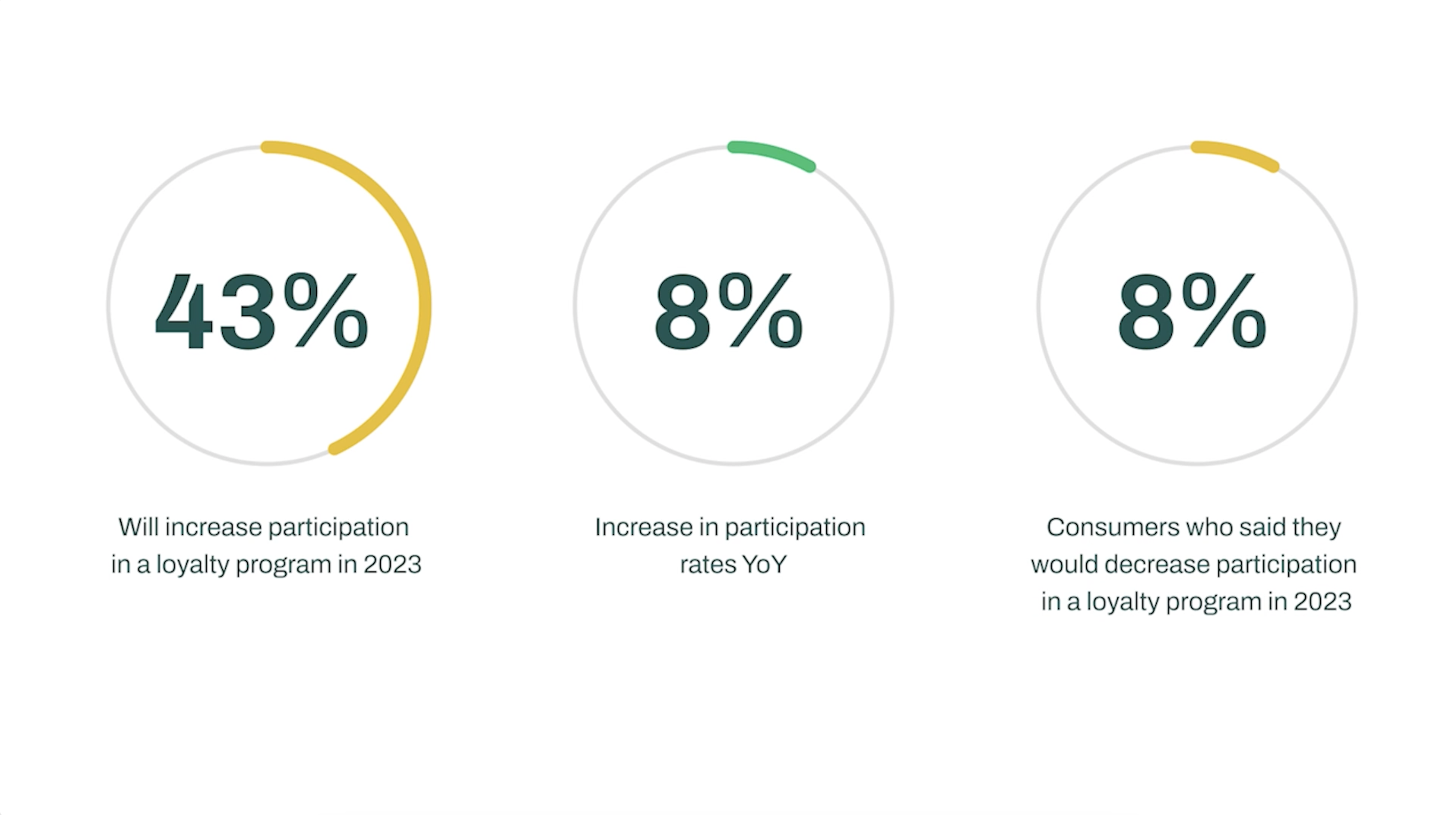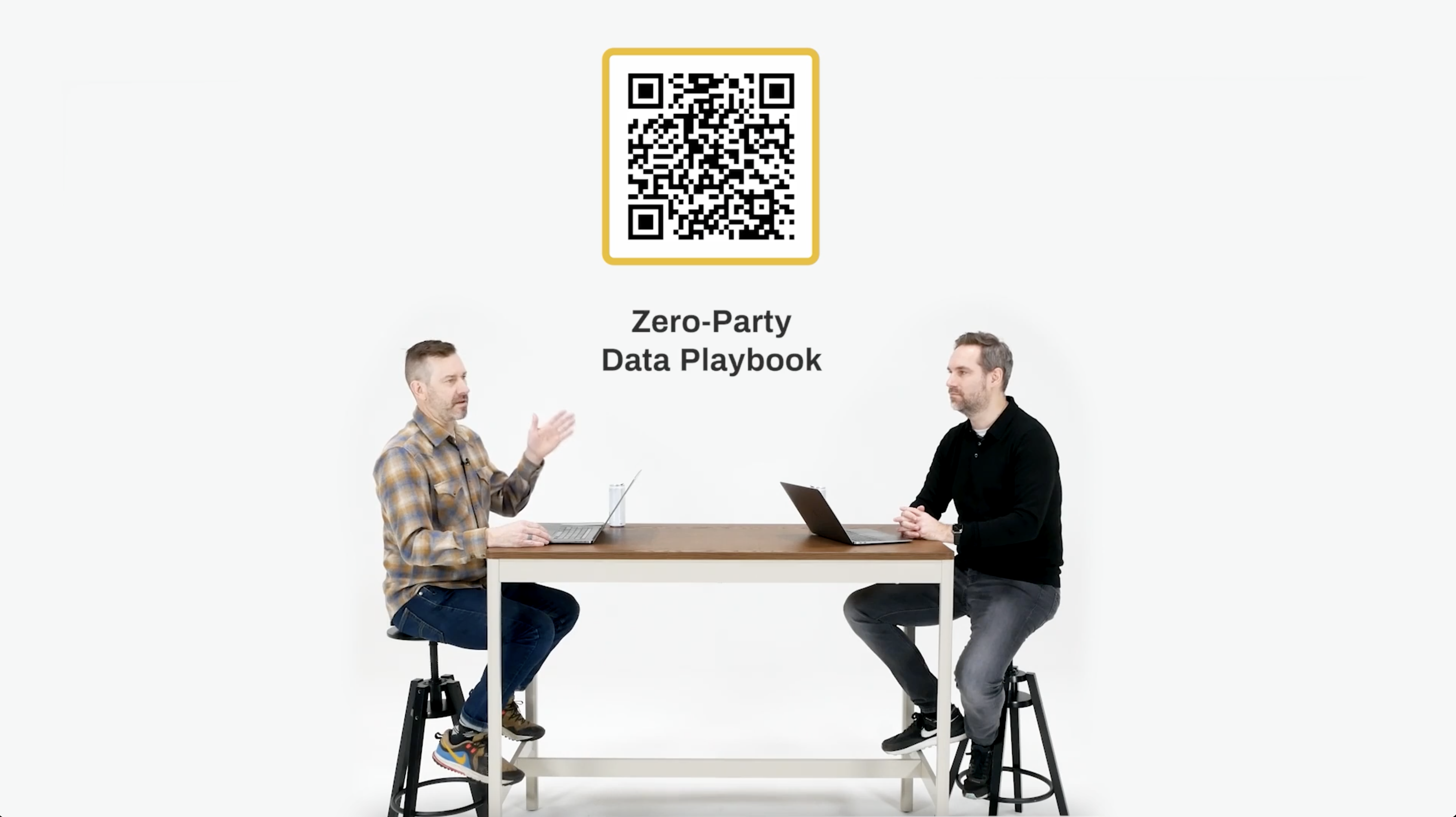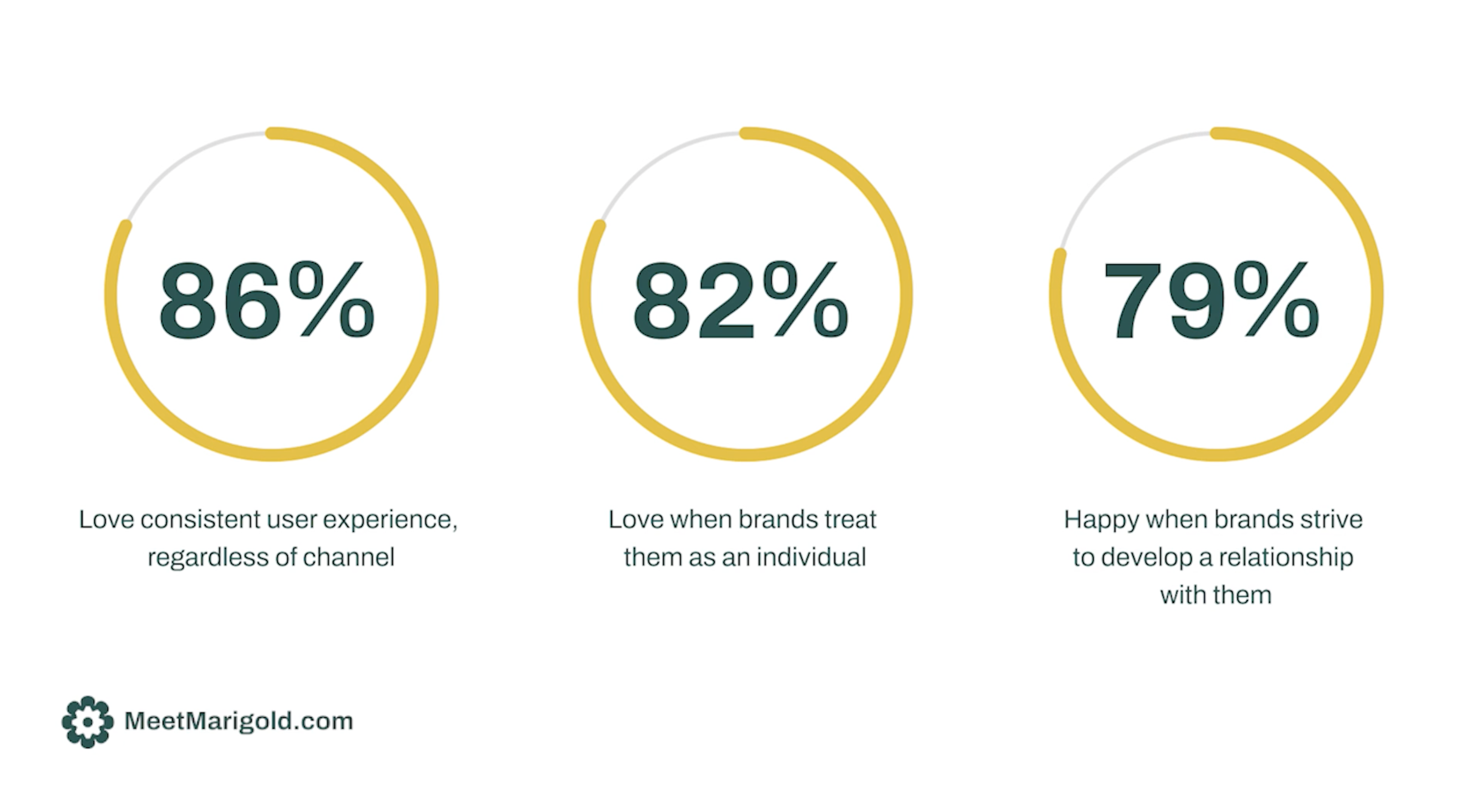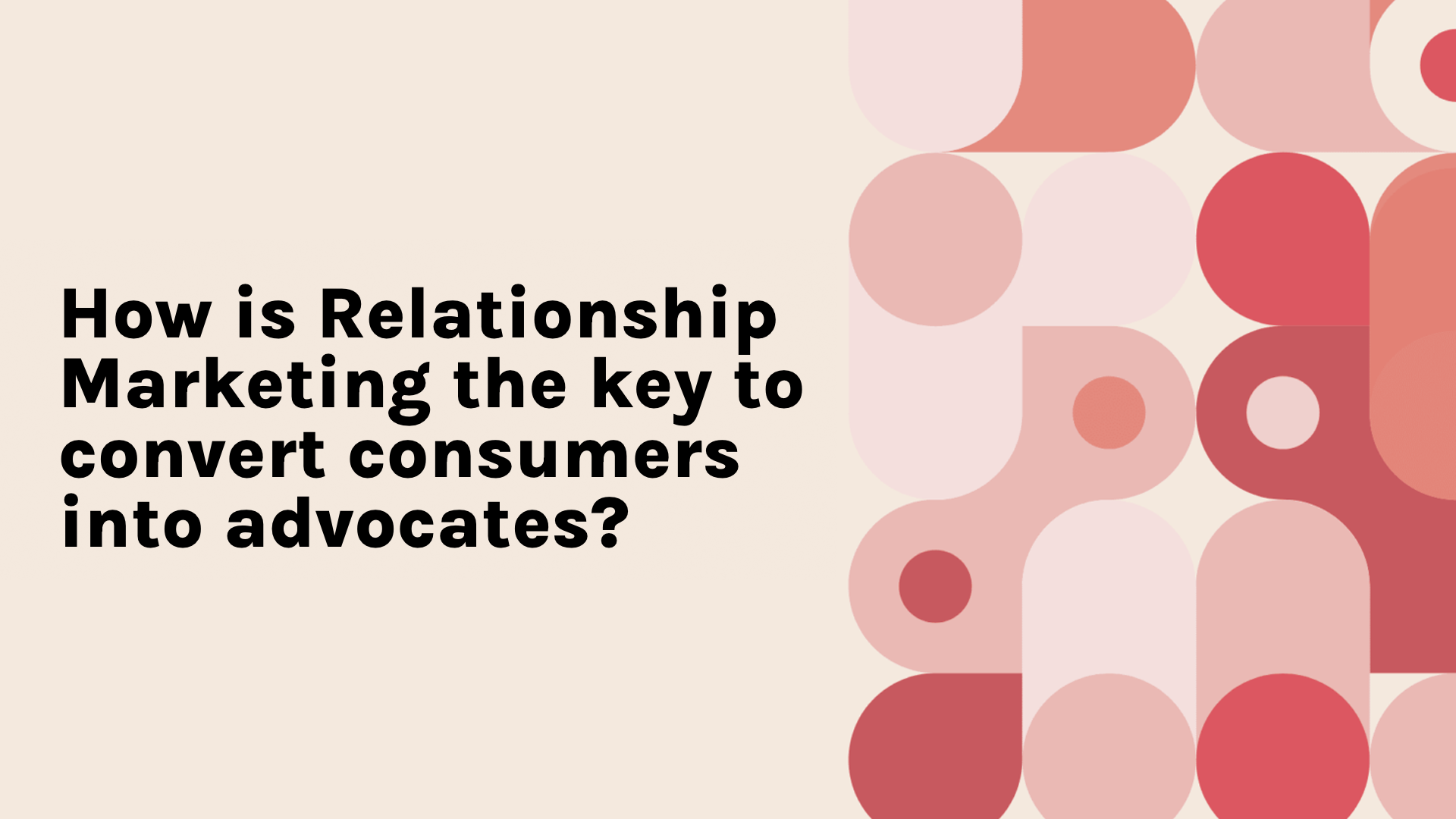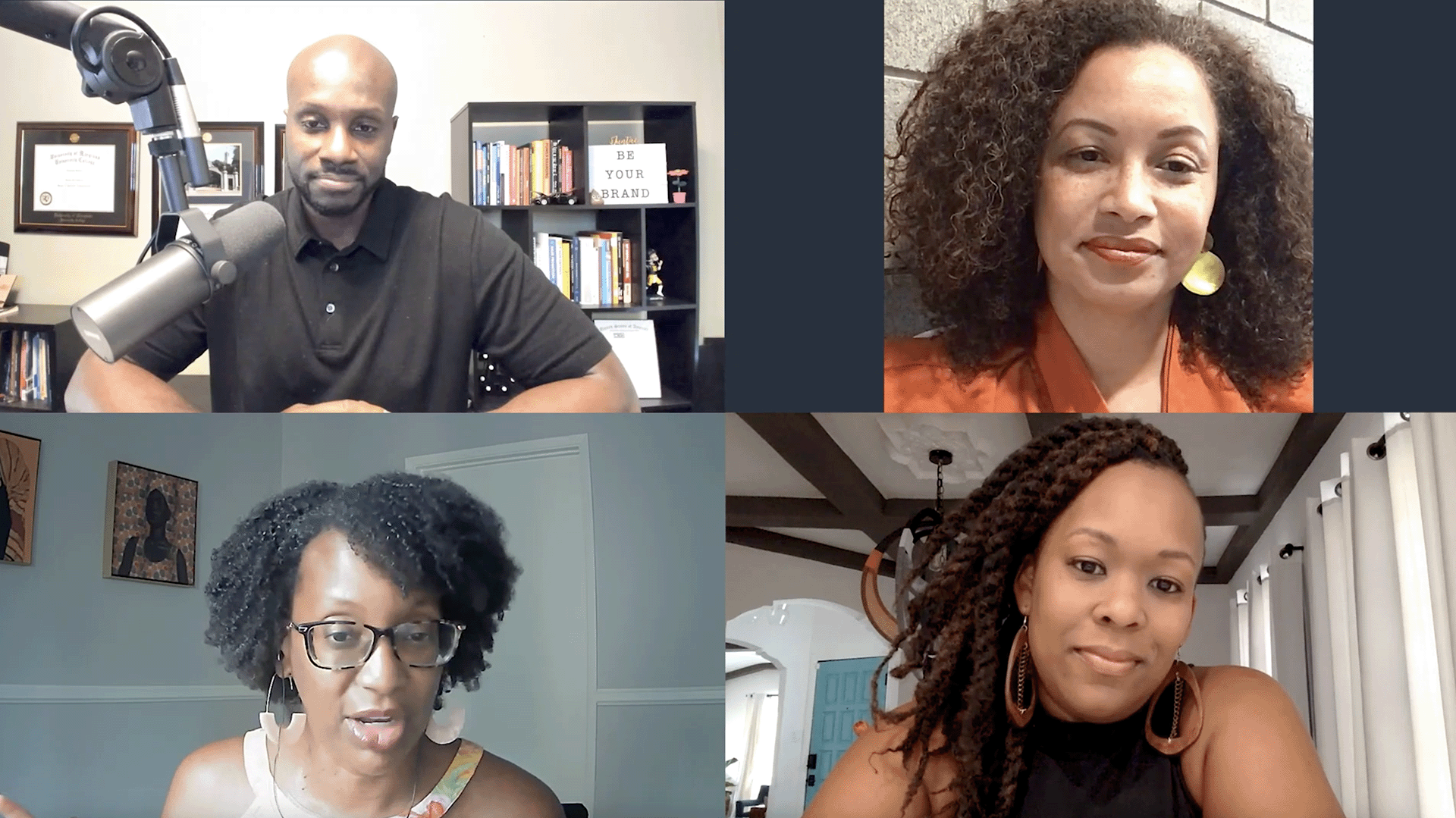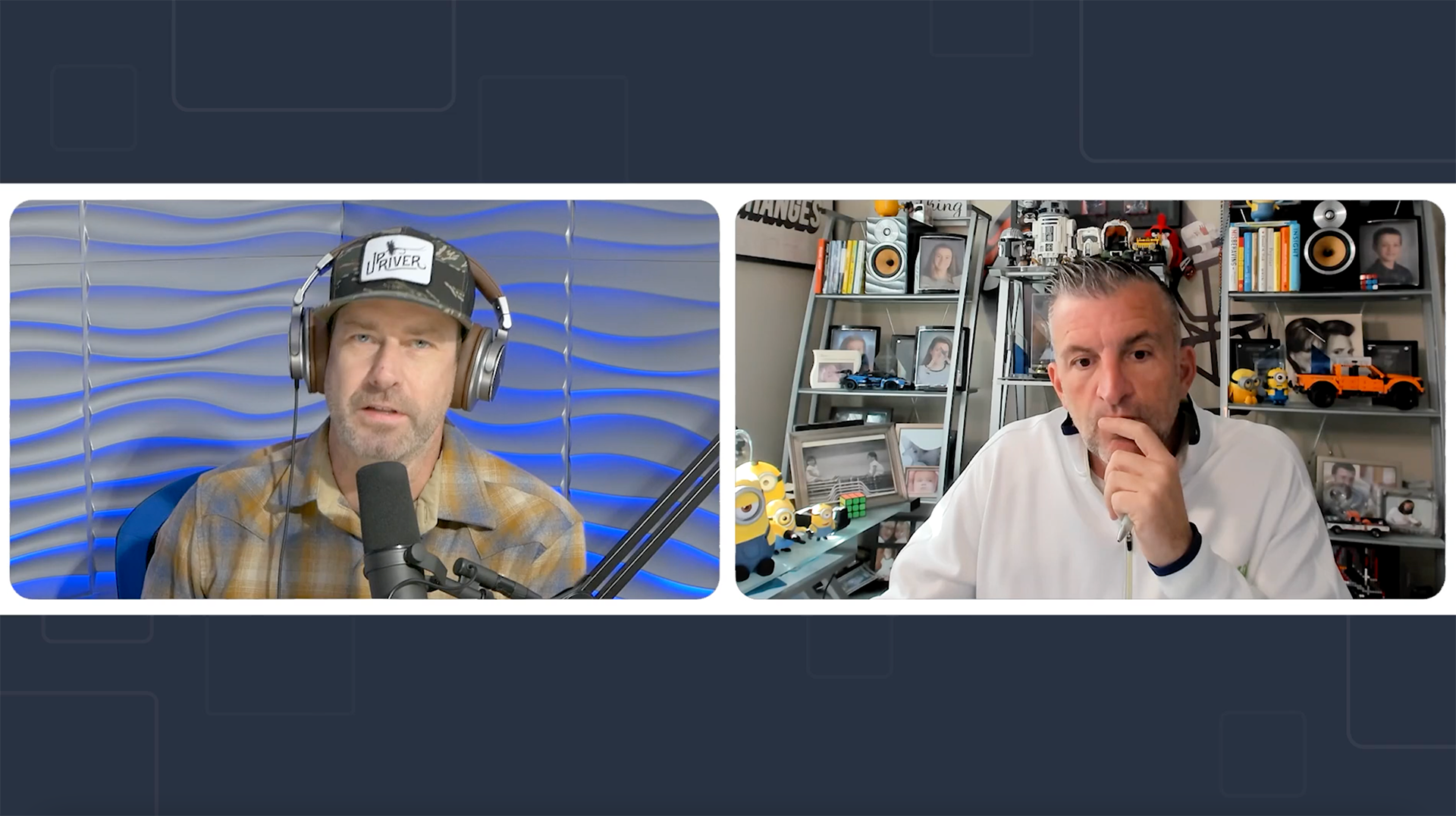The Sweet Personalization Strategy That Gives Magnolia Bakery a Greater Customer Return Rate
- 0.5
- 1
- 1.25
- 1.5
- 1.75
- 2
Simone Edmonds: Hi, everyone. I'm Simone Edmonds, SVP of Global Production Services. Today I have the honor of speaking with Adam Davis from Magnolia Bakery. That's correct, Magnolia Bakery. Best cupcakes, best pudding in the whole wide world. Adam, it's a pleasure.
Adam Davis: I agree.
Simone Edmonds: Yes. It's a pleasure to have you here and to listen to the journey, the story. How you are using relationship marketing for acquisition, engagement, personalization, and retention. So just let's jump right into it. Can you just tell us a little bit about your role at Magnolia Bakery?
Adam Davis: Yeah. I am media and marketing manager. That includes paid media, owned marketing, earned marketing, content strategy, creative strategy, day- to- day media executions, and overall long- term marketing strategy. Goes beyond just daily marketing efforts, but more strategic. The role of marketing in our future and our strategic endeavors as a brand. As a growing brand, it's a very exciting role to have right now so very grateful. But it's, like you said, the cupcakes and the banana pudding do not get old, even when you don't work at an actual bakery. I'm lucky for that too.
Simone Edmonds: Right. You're making me hungry already, Adam. You probably have to be living under a rock if you don't know Magnolia Bakery. But guess what? We may have a few folks out there that don't know Magnolia Bakery, so can you give us an overview of the brand? Then we can follow through from there.
Adam Davis: Yeah. Magnolia Bakery was founded in 1996. The first store location was on Bleecker Street in the West Village. It's still there. Opened as a brick and mortar, beautiful bakery with buttercream swirled cupcakes, and beautifully decorated cakes.
Simone Edmonds: Hungry, hungry, hungry.
Adam Davis: I know. I know. Since then, we've really grown to fame from our banana pudding as well. We have eight locations in New York City. We have a location in Los Angeles. We have a location in Chicago, and we have a number of international franchises as well, which is really cool. You may have heard of Magnolia Bakery from Sex and the City, from SNL, The Lonely Island. We're always featured in the news. Some celebrities pop in and out of our bakeries sometimes, which is cool. But our business has really grown within the last one to two years into an e- commerce brand as well. We're no longer thought of as only a brick and mortar bakery, but we also now offer a direct- to- consumer platform, where we ship all of those same goods, cupcakes, banana pudding, cakes, whatever it is, to wherever you are in the United States. A lot of my efforts are focused on growing the direct- to- consumer, nationwide shipping business, as well as keeping the popularity of our in- store bakeries as high as it is here in New York City, and LA and Chicago.
Simone Edmonds: The expansion and growth is amazing, and we are going to get a little bit more into that as we continue this discussion. Who is your target audience?
Adam Davis: Well, at a very broad level, it's anyone who loves dessert, so I would say 99% of all people.
Simone Edmonds: Yes.
Adam Davis: But naturally, we find most of our target audience here in New York City because they're the most brand aware. But with the growth of the company, becomes this target audience expansion of people who either have heard of us or haven't purchased from us. Or haven't heard of us, but have purchased from our competitors. Or have showed some inclination to purchase dessert at a D2C level altogether. But like I said, it's very broad. At times, from a marketing standpoint, it can get tricky, but it's a good problem to have. We have a lot of people who, if they do try banana pudding for the first time, they're probably going to come back to us for more.
Simone Edmonds: I don't doubt. I don't doubt that at all. You focus a lot on D2C. From your perspective, how are you using the email channel to help you achieve that? What role is Sailthru playing to help you achieve that?
Adam Davis: Yeah. It's become a huge help for us. October will mark the one- year anniversary of our own D2C platform launch. With that, becomes a full 365 days of data, and learnings and things that last October we were just doing blindly. When we launched our website as a D2C channel, we lost a lot of data. We ingest a lot of marketing tactics to start doing in- house, which is why I started at Magnolia Bakery. Email has become the strongest owned tactic that we have, in terms of driving conversion and revenue. We found that our loyalists, the people who love us the most, are always engaging with and purchasing from our emails. It's always top of mind for us using Sailthru as a channel, when we're planning either big campaigns, daily, one- off promotions, or just master brand awareness. We always want to include email to maintain that layer of communication with our customers.
Simone Edmonds: Taking you back to the historical, Magnolia Bakery's has been around for 25 years. Back then, you had no technology to reach the people. How are you using technology now to accomplish that, to take a customer from unknown to a known customer?
Adam Davis: Yeah. A lot of people probably think of Magnolia Bakery, especially in New York, as that old- fashioned, classic brand, and that's part of the reason why we went through our brand refresh in April. Now we have new logo, new colors, new branding fit for that growth stage, that e- commerce heavy brand look and feel. But like I said, we've started from square one in the past year. So part of that has been using data to our advantage really for the first time in segmenting customers, analyzing purchase behavior. Analyzing what kinds of people buy what kinds of products, at what time of the year. One thing that we've implemented has been an 80/20 test split between, " Okay. This is a marketing tactic we know works well for us." The other 20% is like, " This feels like the right place for us to be, so let's test it and see what happens." There are a lot of times where things within that 20% bucket, move into the 80% the next quarter and vice versa. It's always test and learn for us all the way, and it's proven to be successful. We're just going to keep showing up in places that you may or may not expect Magnolia Bakery.
Simone Edmonds: There's no one specific strategy that you're using for customer acquisition. You're trying everything. What's working best for you?
Adam Davis: Yes. There's some baseline paid media tactics that we always know are going to work well. SEM, lower funnel, paid social are the types of things that we are always going to use from a paid perspective. In terms of owned email, now SMS, our own social channels, we have a ton of followers on Instagram and now TikTok. We're adapting for that new age of user- generated content as well. But it's the 20% is we're always hitting the drawing board, and we are always looking for new places to show up to test new things that aren't necessarily purchase. That's not the only thing we care about. If we can get someone to join our email list, for example, by means of a paid Instagram ad, that's something that we'll go out and do. It's not like every dollar we spend has to turn into a sale, which also makes our lives a lot more fun from a marketing perspective. Different tactics with different KPIs, lead to more robust marketing plans, and at the end of the day, more customers entering our funnel.
Simone Edmonds: Got it. That's a lot of data that is coming in. How is Magnolia Bakery using that data, to really and truly fine- tune the engagement for the customers? Then to get right into the retention aspect of the journey.
Adam Davis: Yeah. There's much we do with it behind the scenes. One thing that we find really valuable, like I mentioned earlier, is product affinity, customer type and time of year. Like I said, now that we have a full year of data, we can really look at demand from a high level, in terms of seasonality. Things like returning customer rate and new customers, where are they entering our funnel? For example, one thing we uncovered recently during our holiday planning, was over 50% of first time, nationwide shipping customers purchased banana pudding.
Simone Edmonds: Oh, wow.
Adam Davis: Yeah.
Simone Edmonds: 50%.
Adam Davis: Over 50%, which is pretty crazy.
Simone Edmonds: That's amazing.
Adam Davis: Pre- D2C, before we had our D2C operation in- house, that's something that we couldn't have necessarily uncovered. Our owned audience base, the people who are those Magnolia Bakery loyalists, they'll probably come to us for things like cookies and Christmas cakes, and Santa decorated cupcakes for the holidays. But if we're going out to reach a new customer during the holiday time period, they might actually gravitate towards our bread and butter evergreen assortment, which is banana pudding and our evergreen are always on cupcake assortment, the non- seasonal stuff. We also found that our email audience base is, I think, two times more likely to make a purchase pertaining to holiday items than our paid dollars, which focus on prospecting for the most part. Part of the strategy this year, is use those prospecting dollars to focus on banana pudding, use our email messaging to focus more on the holiday assortment. That's just a very small sliver of how data can lead to menu changes and product features on marketing channels. Another good example is in Q4 I believe of last year, we found that a lot of people were purchasing different flavors of banana pudding in one order. People were going for classic, they were going for red velvet and going for chocolate hazelnut. We didn't have a product that combined all three, and it was some of the most frequently purchased items together. We talked to our fulfillment team and we rolled out a brand- new product, which is the Banana Pudding Variety Pack, which is just two, two and two. It's basically a sampler of all three of our best selling banana puddings. Another one, is a lot of people started purchasing brownies and blondies with banana pudding. We rolled out what we call Baked Fresh Sampler Pack that includes banana pudding, brownies and blondies, all in one product. Product innovation in itself, outside of just marketing, comes to life through data and customer trends that we can see happening in real time.
Simone Edmonds: Beyond being extremely hungry right now, let's talk about the Sailthru platform. How is that platform helping you with your engagement, with your retention to get all of these products out?
Adam Davis: Yeah. When we launched our D2C platform, we were able to start, it's called tagging customers in a PII compliant way. We have a Shopify storefront that basically makes that super easy, where if a customer purchases banana pudding, we can label them as a banana pudding purchaser. Then ingest that banana pudding purchaser's list to our Sailthru audience base, and then send a banana pudding specific email to that customer. When we launch the Banana Pudding Variety Pack, for example, we know who's going to be most interested in that product. It's going to be the banana pudding purchasers, and they're going to get the first preview of that product before the masses do. We could also segment on things like high- value customers, so people who spend, I don't know, $ 150 to $200 on our site per purchase. When we roll out a new product that has a higher price point, maybe bundles, things like that, we can talk to those customers directly. Deal seekers is another one. We just did our Banana Pudding Week promotion in late August, which offered 50% off all of our banana pudding for the first time. Which was a wildly crazy but very successful promotion, very first of its kind. We were able to find of our existing customers, who's more likely to come back when a discount is offered? That the next time we do any promotion, whether it be Cyber Weekend, for example, we know that those people are going to gravitate towards it right away. Those are just a few examples of how we ingest data on a customer level, right into Sailthru. Create audiences and really streamline the entire marketing process, to make sure that we're reaching the right people.
Simone Edmonds: Really awesome. That helps you to determine where you spend your marketing dollars.
Adam Davis: Yeah, of course. There's this demand fluctuation that we see as a whole over time. Again, now that it's been 12 months, we can really zoom out and see, " Okay. In these months, our paid dollars had a very strong ROI or CAC, or the LTV on customers were higher coming in from paid marketing during these months. Or our emails were performing extremely well in February, but not so much in March, for example." Showing that our email base really likes our Valentine's Day products, but not so much our March exclusives. Just making this up, it's just a hypothetical. They probably like our March products, too. But when you zoom out and look at all that from a very high level, it leads to a marketing strategy, in terms of how much we're spending, how much we're sending. During the holidays we see with every email send we do, there's incremental revenue no matter what. I think around 8% to 10% of our daily revenue in Q4 on days we sent an email, came from email. That was extremely profitable for us. It showed that you think of receiving an email a day as annoying sometimes, and you just hit unsubscribe right away. Our customer base actually enjoyed seeing the variety of our holiday products and all the different things that we offered. Those are all very valuable learnings that informed the greater yearly media strategy. But also now as we go to Q4 this year, our daily content strategy, we are already sketching out emails that we're going to be sending with each day. Because we know from last year, what products perform well, what audiences work well. Yeah, we're looking forward to a much more data- informed, successful Q4.
Simone Edmonds: You have a lot of maturity in your journey on relationship marketing. The third step of that is personalization. When I listen to you, you speak with such authenticity because you do know your customer. Let's talk about how do you personalize, to get that customer retention to stay in place?
Adam Davis: Yeah. It goes hand in hand with the customer tagging. We ingest that data right into Sailthru, and we classify customers in 20 different ways and in ways that you think we'd never use. For example, a gifter. A gifter is very broad, but a lot of our audience, we see gift messages come up all the time. We found that a lot of our audience base, are actually sending banana pudding from New York to their friend in California. Or when it's a seasonal tentpole like Valentine's Day or Mother's Day, we see a lot of gifting behavior as well. The gifting audience, while it seems large, is actually very niche. When it becomes time to start talking about this year's Christmas, we can talk to the gifting audience with a message tailored for gifting, the best gifts that Magnolia Bakery can offer. A big one is new product releases. Sometimes we do a VIP treatment for product releases, where we know a big one is banana pudding cookies that we released this year, which are insanely good if you haven't tried them. They're soft baked cookies made with actual pudding mix and vanilla wafers.
Simone Edmonds: On my list.
Adam Davis: Yeah. They taste like banana pudding in cookie form. When we released that, that was one where we knew we had to be smart about who we reach with that first touchpoint, because we didn't want everyone to know about it right away. We did a secret menu drop and we only sent emails that people we knew had made multiple purchases of banana pudding, who were going to be the most excited and who were going to get the word out. Just because it was a secret menu drop, doesn't mean that anyone else could have gotten it. We saw a lot of buzz come from that as well. People started telling people about it and all thanks to the fact that we knew who we were reaching with that first touchpoint. We knew that we were talking to banana pudding lovers, and these people were going to absolutely freak out when they found out that we were offering a banana pudding cookie. That's kind of good.
Simone Edmonds: Got it. Sailthru is helping you to personalize, is helping you to segment, and you're pretty clear on the products that you have out there. Give me a little bit more insights on how you classify your customers.
Adam Davis: So many different ways. There's three main ones that we think about. Product affinity, purchase behavior, and also geographic location. Because you think about our D2C business versus our in- store business, a lot of people enter our email base just from purchasing in New York at an actual bakery location. That means they are not interested in seeing really anything about nationwide shipping, because why pay shipping when you could just walk into a bakery? It's very important for us to classify the actual geographic location of a customer before we start hitting them with nationwide or in- store messaging. Once we announced banana pudding cookies were live in our stores, we didn't want people in San Antonio, Texas to see that message, just because it's completely irrelevant to them. Then purchase affinity or product affinity is a big one. There are people who love to purchase multiple things in one cart. There are people who just look at banana pudding no matter what. There are people who only buy our monthly exclusive puddings. Every month, we roll out a brand- new pudding. It's only available for a month online, and then that's it. There are people who come back and only purchase that pudding month- over- month, which is why we rolled out our subscription program, which we could talk about later on, which is very exciting. But every way that you could possibly think, we have those audiences always updating in real time with Sailthru. So that we don't have to do any work when it comes time to send an email to those audiences besides just press send. Sailthru definitely makes our lives a lot easier and works very closely with Shopify, in making sure that when a customer enters the funnel, they're being identified as the right type of customer for marketing purposes. Then we're ready to send out marketing, it's a no- brainer and the right message is in their inbox at the right time.
Simone Edmonds: Yeah. The data, it's really impressive, the focus on the data and the diligence around it. How are you using the data, especially the purchase data, to streamline let's say your product offering and have it guide your strategy?
Adam Davis: Yeah. There's some that bubble up right to the top always. There's some trends that we just look at the orders coming in, and we see people purchasing at a certain time of day, at a certain week of the year. Certain products being bundled together that inform actual product innovation, which is always the most fun for me because it goes beyond marketing. It's like it goes into actual product innovation, where we can easily see so many people are purchasing banana pudding with brownies and blondies. It's so easy for us to just say, " Let's just make a product that includes all of these things. Let's make life easier for our customers, because we know that so many of them want banana pudding, and brownies and blondies." When we launched our D2C platform last October, it was impossible for us to foresee that happening. We're always pleasantly shocked when people are buying so many unique desserts together. When we can roll out a new product that speaks to those people and makes them happy, it makes us happy too. It's easy to innovate for us. The more product you mention us being this old- fashioned brand that a lot of people think we specialize in two or three things, but we are always, always innovating. Now in Q1 planning, we are looking at a full year of data, and bringing new things to the table that we haven't done before. All because we have all this very valuable data in our hands for the first time, so very exciting.
Simone Edmonds: Definitely, we'll get back to the subscription program. I can't wait to talk more about it. Innovation's clearly key, keeping you ahead of the competition.
Adam Davis: Yeah.
Simone Edmonds: But let's talk about what results are you seeing from personalization? What results are you seeing from segmentation?
Adam Davis: Yeah. There's a few key metrics that we look at to gauge success of our marketing campaigns, specifically via email. We can look at straight revenue, which isn't always a gauge of success, just because sometimes if we talk to only cookie lovers, it's 10% of our audience base. We can't say the revenue on this email wasn't as high as this email, only because we were talking to a smaller audience base. We like looking at revenue per 1, 000 sends, which is one that Sailthru makes our lives easier in showing us. But we also look at returning and new customer rate, which is a big one. We see returning customer rate peak during tentpole holidays, which we know. We tend to cater the product assortment more to a holiday when we know we're talking to a return customer. Naturally, people on our email base, most of them have come in post- purchase. But there are also customers or potential customers who haven't purchased with us who are in our email base, who may see our 10% off birthday offer, for example, on our site or in our marketing. They join our email list, but they've yet to make a purchase. The more we can segment within that and say, " Hey, these people are actually on our email list, but they haven't purchased anything." It tells us, " Okay. Let's show them banana pudding, rather than let's show them our holiday cookies that could easily blend in with the other brands who make holiday cookies." Yeah. It leads to smarter marketing, but very, very tailored marketing. It doesn't necessarily always tie to revenue. It ties just to engagement over time. We know our customers are always engaged with us. We see very little opt outs. Yeah. It just tells us that we're doing a good job on content and messaging, depending on customer type.
Simone Edmonds: Now it's at a fourth stage of relationship marketing. Retention, retention, retention.
Adam Davis: Yep.
Simone Edmonds: Let's talk about the pudding, let's talk about the program. Let's get it out there.
Adam Davis: Yeah. We have our subscription program, which is brand new. It's called the Pudding of the Month Club. It is the direct result of what I was saying earlier, of there are these trends that we see happen over time that we need to capitalize and innovate on. Where people come back month after month, only purchase the monthly pudding and nothing else. Our thoughts were let's streamline that process. Let's make it easier for those people. Let's also make it more price effective for those people. Let's turn it into a full experience, where they don't know what they're going to receive month after month. They get a delivery to their doorstep, we know how excited they're going to be and we turn it into a club. You sign up for either three, six, or 12 months and it operates like a real subscription. I'm 99% sure we are the only brand doing a banana pudding subscription. You can fact check me on that, but it was very turnkey for us. Our production facility is already making a ton of banana pudding. It was easy for us to sync up with them and bring this one to life. The marketing has been fun and different. Now, we're talking to people who we know are the die- hard banana pudding lovers. We're not talking to them like a potential new customer, where we need to explain the benefits of our banana pudding like they haven't tasted it yet. These people know exactly what they're getting and we need to get them excited about it. Each month, they receive a package of six cups of pudding, three of our classic, and three of whatever that pudding of the month is. A lot of times, our nationwide shipping customers, especially the ones outside of New York, Chicago, and LA. They have FOMO that they're not getting the in- store flavor of the month where you could just walk in and get, for example, a chocolate peanut butter banana pudding. The subscription program gives them a taste of that exclusivity that our brick and mortar locations are getting. It's very exciting. It was a fun one to bring to life, and it's just another part of the growth of a D2C business. A subscription is, I think, a few years ago probably would've been hard to see us doing. But now as we grow to this e- commerce focused brand, it's just another easy turnkey thing for us to do for our loyal customers.
Simone Edmonds: How is Sailthru helping you with that program in general? Is it helping to make your life a lot easier? Provide some insights there.
Adam Davis: Yeah. We have lifecycle optimizers set up within Sailthru that talks to those customers every month. We have a template that we use for monthly subscription emails, introducing the flavor that we set up through Sailthru. That automatically updates. All we have to do is update the email creative, and it's sent right away to people who purchase the subscription on the first of each month. That's like the big announcement email. Then when the subscription is coming to the end, we also use Sailthru to remind customers that their subscription is up. We give them the option to renew their subscription. That's all part of that greater lifecycle optimizer that we use via Sailthru, that basically streamlines all the conversations really that we're having with our subscription purchasers, which is really great. It does, like you said, make our lives a lot easier.
Simone Edmonds: It's really amazing to listen to the maturity, the journey from 25 years ago, to where you literally have your customers right now and completely, completely engaged. I can't wait to get out of this chair and really start subscribing for the pudding.
Adam Davis: Yes.
Simone Edmonds: For the pudding.
Adam Davis: That's perfect.
Simone Edmonds: Definitely need a pudding.
Adam Davis: It's so worth it.
Simone Edmonds: I know that you and your team, you're big Sailthru fans. Tell us why.
Adam Davis: When we launched our D2C operation, the launch of Sailthru with us, it went hand in hand. We could not launch a D2C platform without launching with Sailthru, because we knew that right away we were going to start marketing in a new way. We needed a partner that could be scrappy and innovative, and creative with us and really understand what our business needs, especially since there's so many touchpoints to our business. We needed a partner who could understand all the audience segmentation that we have to do, all of the creative messaging that we have to do. All the different lifecycles that we have to account for when we think about our marketing, Sailthru became a very useful partner in making it all very simple and highly visual for us to understand, " Okay. Customer makes a purchase or customer enters your email list. Here's how they're going to flow through your full funnel of marketing from here on out." The segmentation is a huge one for us. We use it every second of every day in building lists and audiences, and thinking about how we use our lists to formulate marketing messaging, not vice versa, which I think is very important. We start with the data first. We start with the audiences that Sailthru helps us build. And then we think about, " Okay. What do we have to say to these audiences? What's going to make them more exciting?" Yeah. We love Sailthru because of how easy it is and because of how helpful the platform is to accomplish our business needs, whether it's revenue, engagement, awareness, or just providing another touchpoint throughout the funnel.
Simone Edmonds: Awesome. We really love being part of your journey. In collaboration with Sailthru, if I can ask you to go one year from now, what would you hope to have accomplished via your customers and having this platform be really and truly a big part of your journey?
Adam Davis: Our audience base is growing and it keeps on growing. I would say in one year we'd like to see it double or maybe over double, because we're seeing a lot of new customers purchase from us and sign up for our newsletter. Sailthru, with rolling out SMS, is very exciting for us as well because SMS is something that we haven't capitalized on yet as a brand. Or I should say we just started using it for the first time with Sailthru, so we're very excited about that. But that tactic is going to help do what email does, but at a different level. Showing up at a different touchpoint in a different inbox, is a different mindset that we don't normally find our customers in. Rolling out SMS, we have to rethink what do we want to say to those people who opt- in for SMS, because it's not the same as our emails? What time of day do we want to send that because it's not the same as our emails? There's a whole new bounty of learnings that we can uncover with that new tactic, that's going to lead to the success of our own channels as a whole. It's going to lead to us, like I said, creating marketing tactics that pertain to trends and data that we see through SMS, which we don't even know yet but it excites us as a marketing department. Yeah, we just started sending SMS last month. In a year, I would hope that it's part of our daily, weekly, always on content. And part of our big tentpole strategies for the big holidays that we know and love. Yeah, we're very, very excited about the growth.
Simone Edmonds: Well, thank you. Thank you for sharing the maturity model with us. Thank you for providing insights in how you are using the relationship really to mature your journey, your marketing journey. We really appreciate the collaboration, and it's really great to be working with you and your team. Team, there you have it, Magnolia Bakery, the journey from 25 years ago to present. The use of technology, the insights into really customer, taking a customer from unknown all the way to retention. Adam providing all of those insights to us. Thank you. We look forward to your collaboration. And as I said in the beginning, it's the most mouthwatering interview I've ever done. I'm very hungry, but we've learned a lot. I think you've put a lot out there, that show us how we can take a customer from unknown, all the way into a retention program.
Adam Davis: Yeah. Thank you. Next time I'll bring cupcakes. I'm sorry.
Simone Edmonds: That's okay. We'll hold you to that.
DESCRIPTION
When Magnolia Bakery selected Sailthru as its email service provider, they were crystal clear on what they wanted. After 20 years in business, ten brick and mortar shops and a thriving ecommerce business, Magnolia Bakery needed a consolidated database to understand more about their customers. Were local shoppers placing online orders? If shoppers were buying banana pudding and cookies, should Magnolia offer a combo offer? Were paid media campaigns really attracting new customers?
Join us for an informative session about how Magnolia Bakery created segmented audiences and leveraged the immediacy of A/B testing to learn more about their audiences and how they increased their conversion rate by nearly 40%.
Takeaways:
- Magnolia Bakery’s knowledge about shopper preferences combined with personalization has yielded a returning customer rate of 30% in the last year.
- A/B testing is considered one of the brand’s most important tools for creating a continuous feedback loop with their customers.
- The shopper data they’ve accrued in the last year is informing how Magnolia will plan their holiday campaign. Returning shoppers are more likely to buy via their owned channels. New customers are more responsive to paid media campaigns.
Today's Guests

Simone Edmonds



